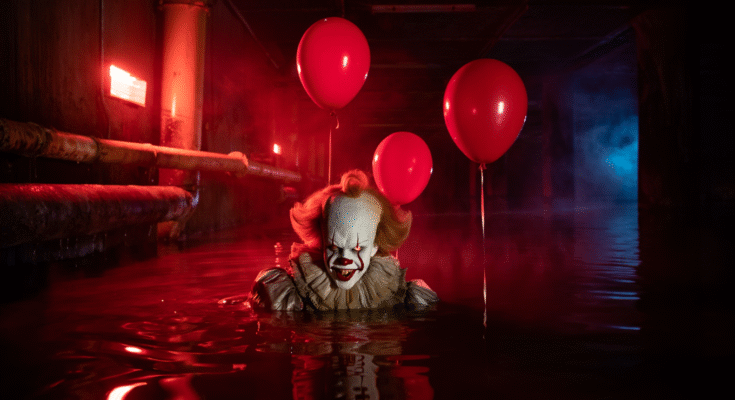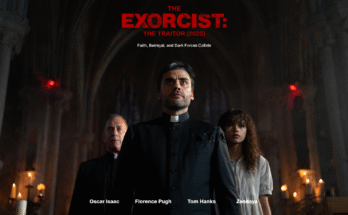Two legends of terror. Two faces of pure fear. One nightmare too big for the world to contain. Pennywise vs Jeepers Creepers (2025) is not just a crossover — it’s an event, a violent collision of myth, madness, and the macabre that drags audiences straight into the heart of darkness and leaves them clawing for breath. Directed by André Øvredal (The Autopsy of Jane Doe, Scary Stories to Tell in the Dark), this film doesn’t wink at its audience — it bares its teeth.
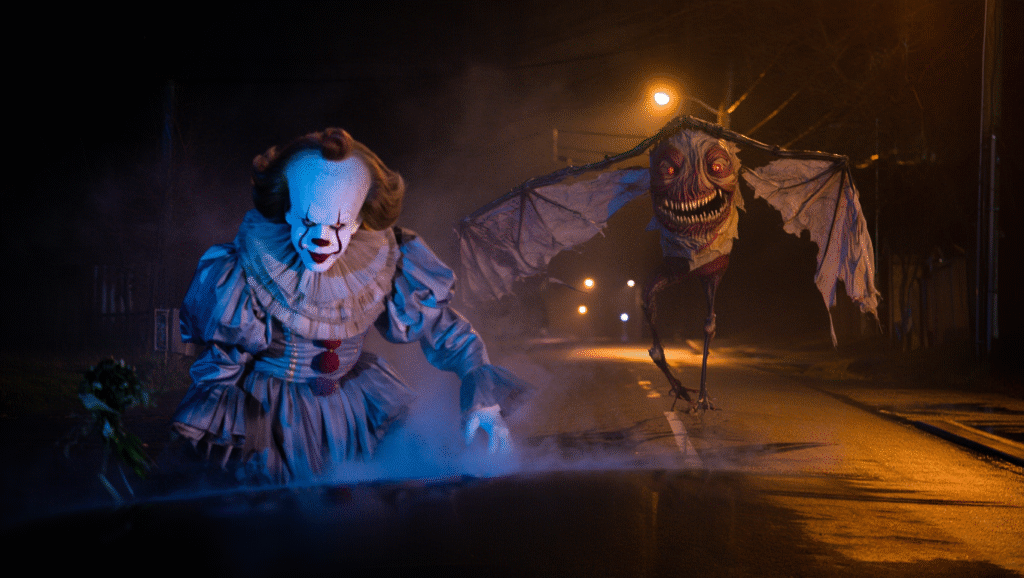
The film opens with eerie stillness — a ghost town rotting under the weight of something unseen. When the wind howls, you swear you can hear laughter. When the silence falls, you sense eyes watching from the dark. In these first moments, Øvredal sets a tone of primal unease, grounding his supernatural tale in something that feels almost ancient, as though these monsters aren’t just killers — they’re cosmic forces colliding.
The Creeper (Jonathan Breck, returning in his most terrifying form yet) rises first, hunting in the shadows of the countryside. His hunger is eternal, his body a patchwork of stolen flesh. But his ritual is interrupted by something older, crueler, and infinitely more playful: Pennywise the Dancing Clown (Bill Skarsgård), emerging from a drainpipe like a nightmare reborn. His red balloon drifts across the cornfields, a signal — the feast is about to begin.
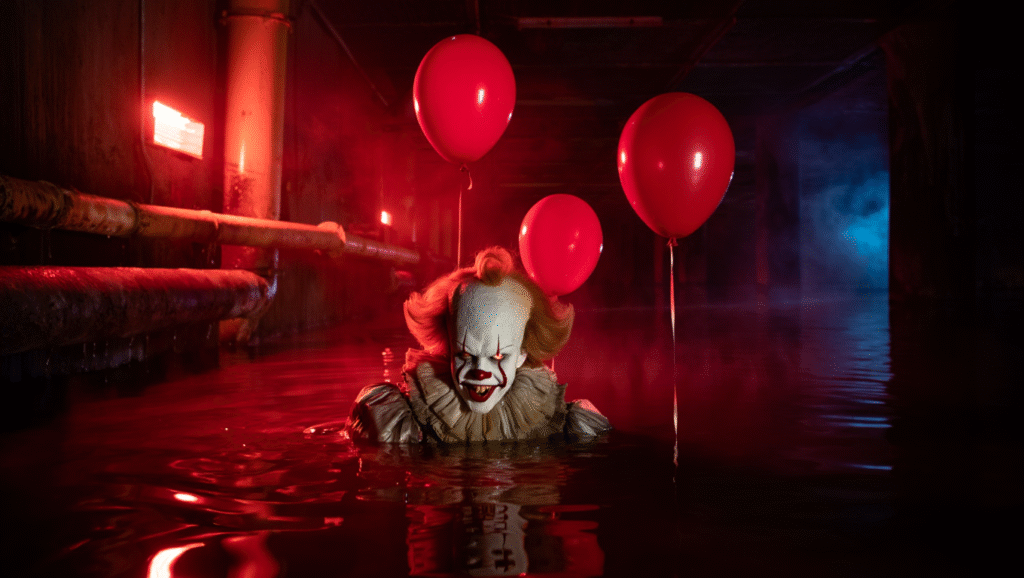
What follows is not a simple monster brawl; it’s a descent into fear itself. The Creeper hunts by instinct, raw and physical, while Pennywise feeds on the mind, twisting hallucination into horror. Their paths collide over a handful of survivors trapped in the ghost town — among them, a teenage girl haunted by her brother’s disappearance, a cynical drifter with a history of violence, and a local preacher whose faith is unraveling. Each of them becomes both prey and pawn in a war between monsters who see humanity as nothing but a meal.
The film’s second act is a masterclass in tension. Øvredal contrasts the Creeper’s earthy brutality with Pennywise’s theatrical sadism — claws against illusions, wings against laughter. One scene — a chase through a church where stained-glass windows flash with images of both demons — feels destined to be iconic. Another, where Pennywise mimics the Creeper’s voice to lure victims, is pure psychological brilliance.
Visually, the film is staggering. Cinematographer Larry Fong (Watchmen, Kong: Skull Island) cloaks everything in ominous hues — rust, crimson, and fog-choked silver. The world feels decayed, cursed, and alive. Every shadow could hide a wing. Every reflection could grin back at you. The horror isn’t just in what you see — it’s in what you almost see.
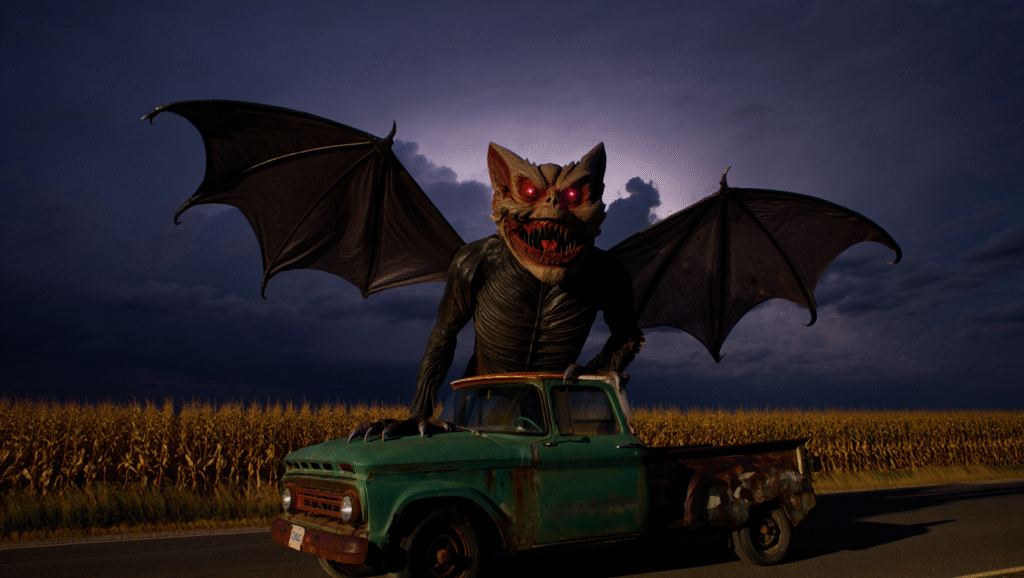
And then there’s the score. Composed by Benjamin Wallfisch, it’s a sonic duel between madness and hunger — circus organs warped into shrieking dissonance, mixed with guttural tribal drums that echo the Creeper’s pulse. The result is unsettling and unforgettable, amplifying the sense that these creatures are not just enemies of man, but enemies of each other — embodiments of different eras of evil colliding in one apocalyptic symphony.
The performances are ferocious. Skarsgård is electric, slipping between charm and malevolence with terrifying ease. His Pennywise is no longer content to haunt children — he wants to dominate fear itself. Breck, in turn, gives the Creeper a silent but palpable intelligence; he’s a beast that learns, evolves, and adapts mid-battle. Their eventual face-off, staged in a fog-drenched cornfield illuminated by lightning, is nothing short of breathtaking — grotesque, poetic, and primal.
Yet beneath the spectacle lies a chilling idea: that fear itself is cyclical. The film toys with myth, suggesting that both Pennywise and the Creeper may be fragments of the same ancient evil — manifestations of terror reborn through time. It’s a concept that transforms what could’ve been a gimmick into something hauntingly mythic.
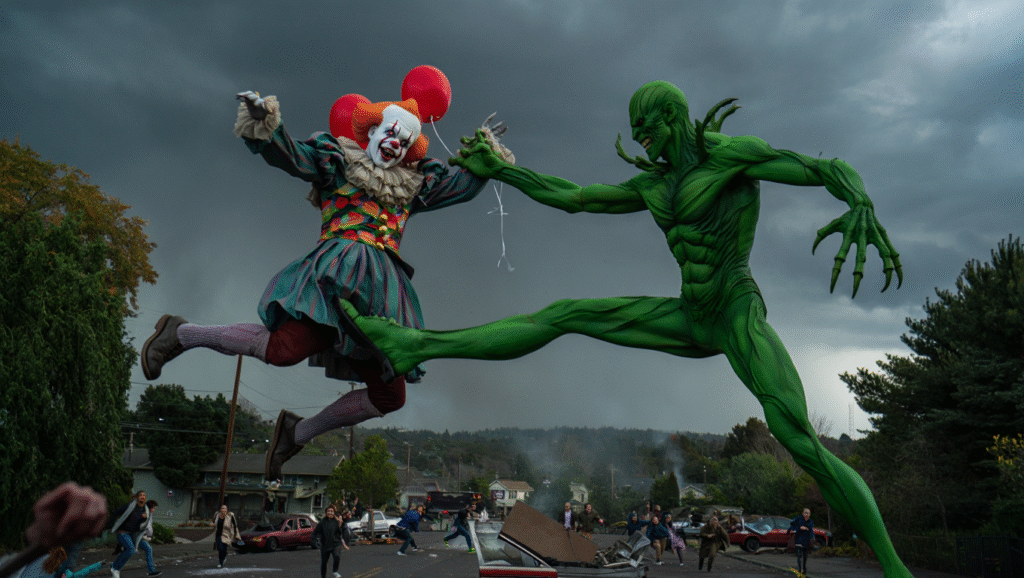
As the third act descends into chaos — bodies torn, minds shattered, the town consumed in flame — Øvredal refuses easy answers. The final confrontation is both violent and metaphysical, a battle not just for survival, but for dominion over fear itself. When the smoke clears, only one creature remains… and yet the laughter echoes, low and eternal.
Pennywise vs Jeepers Creepers is horror at its purest: bold, brutal, and unrelenting. It honors the legacy of both franchises while creating something fresh and nightmarishly epic. Every frame bleeds dread. Every scream feels earned. This isn’t a crossover for fun — it’s a war for the soul of horror cinema.
⭐ Rating: 4.7/5 — Visceral, terrifying, and mythic. André Øvredal crafts a monster showdown that’s both cinematic and cosmic — where fear itself takes the final bow.
